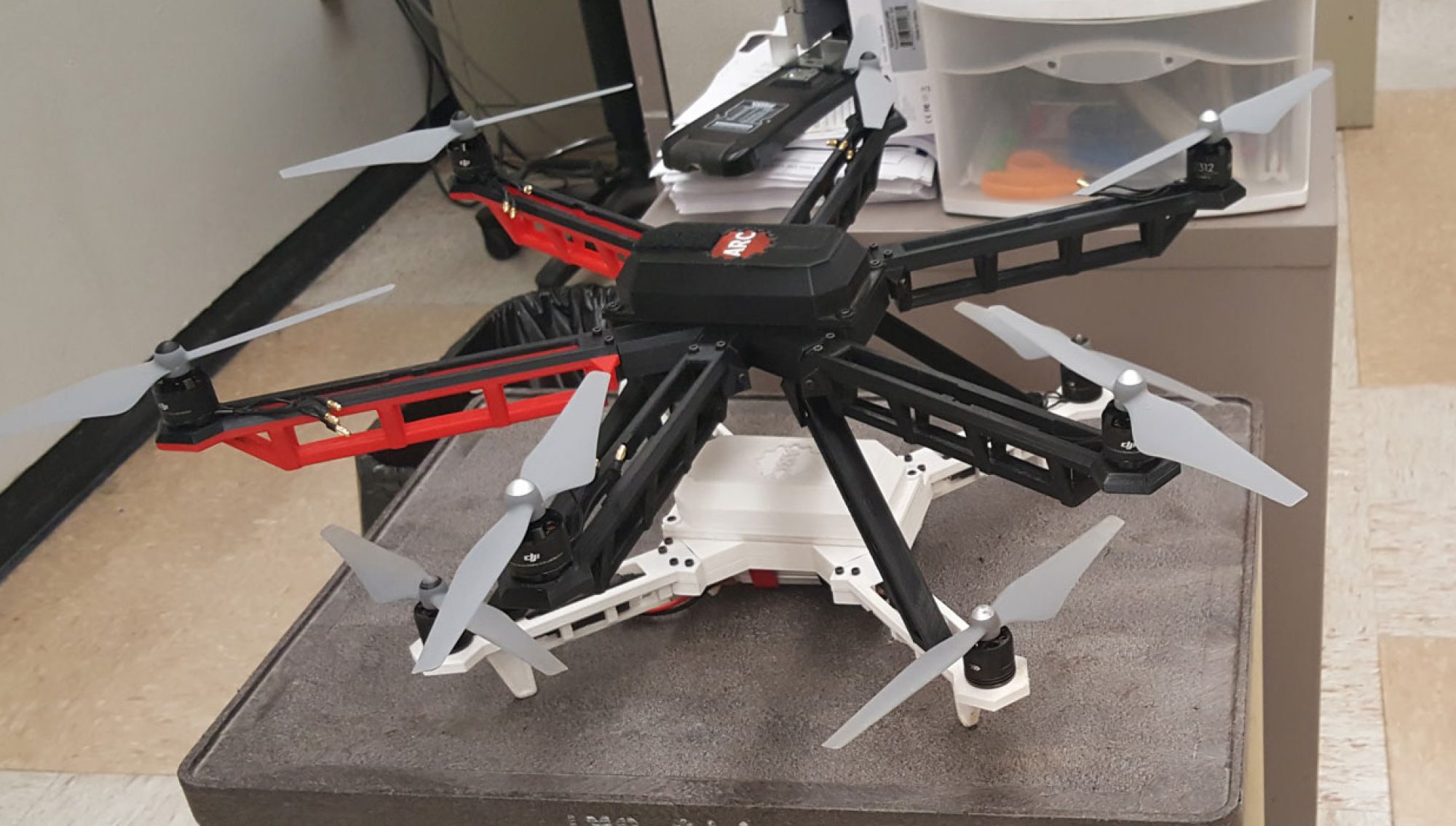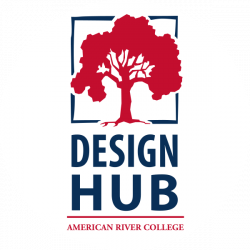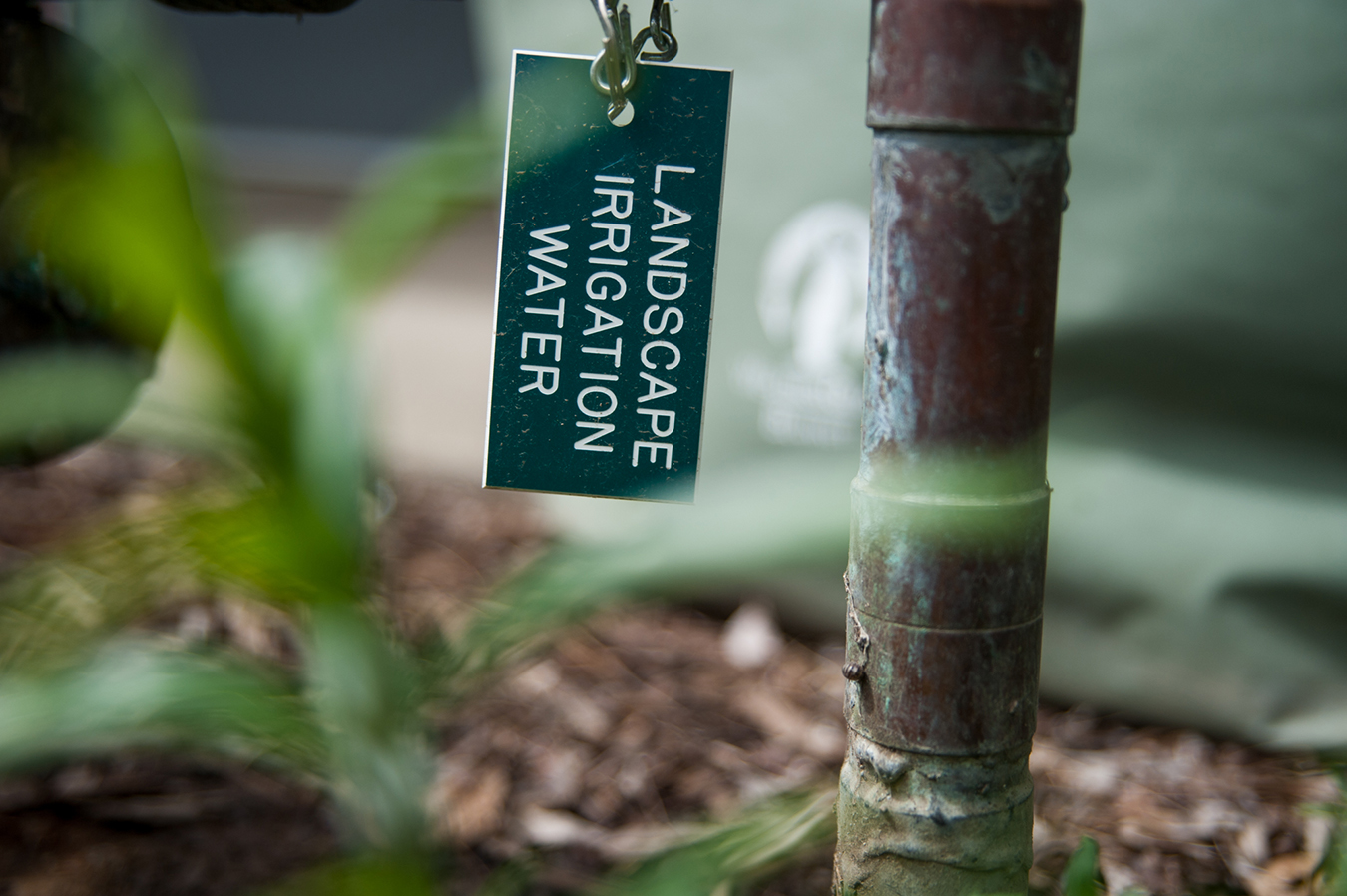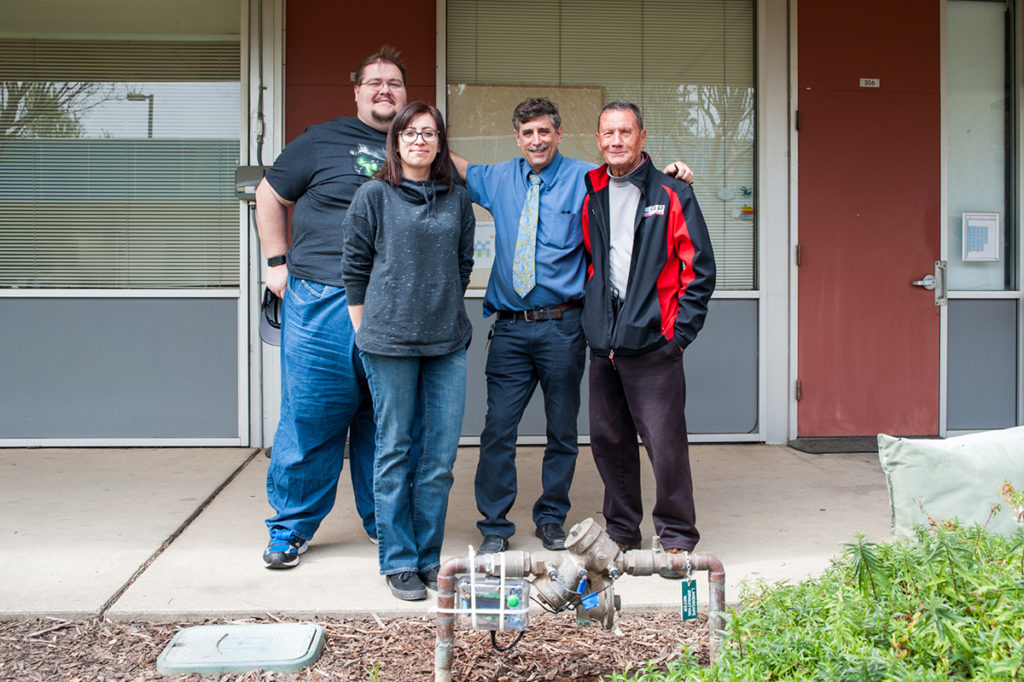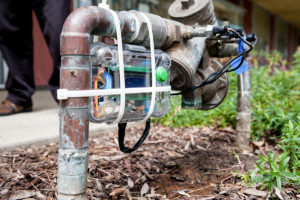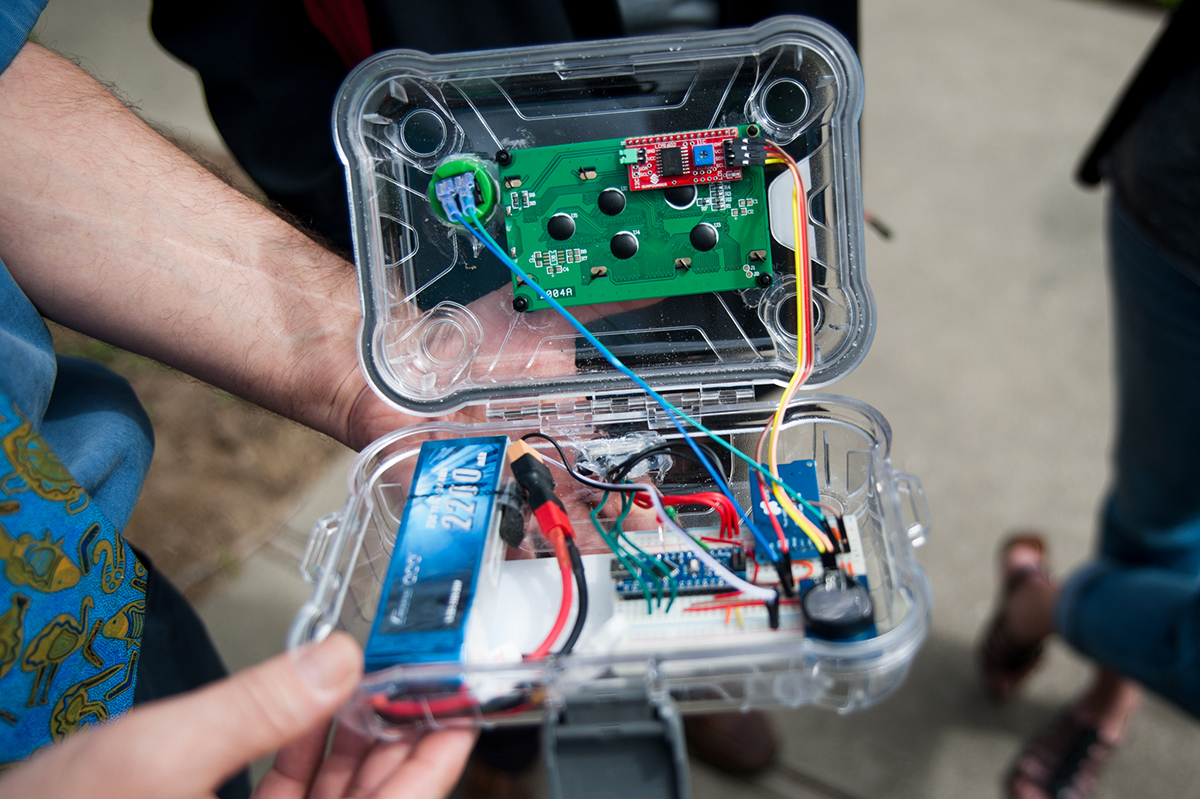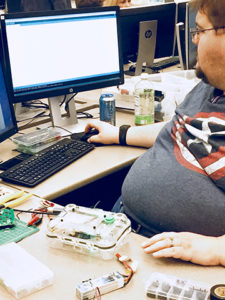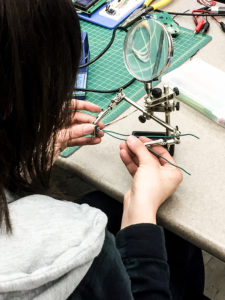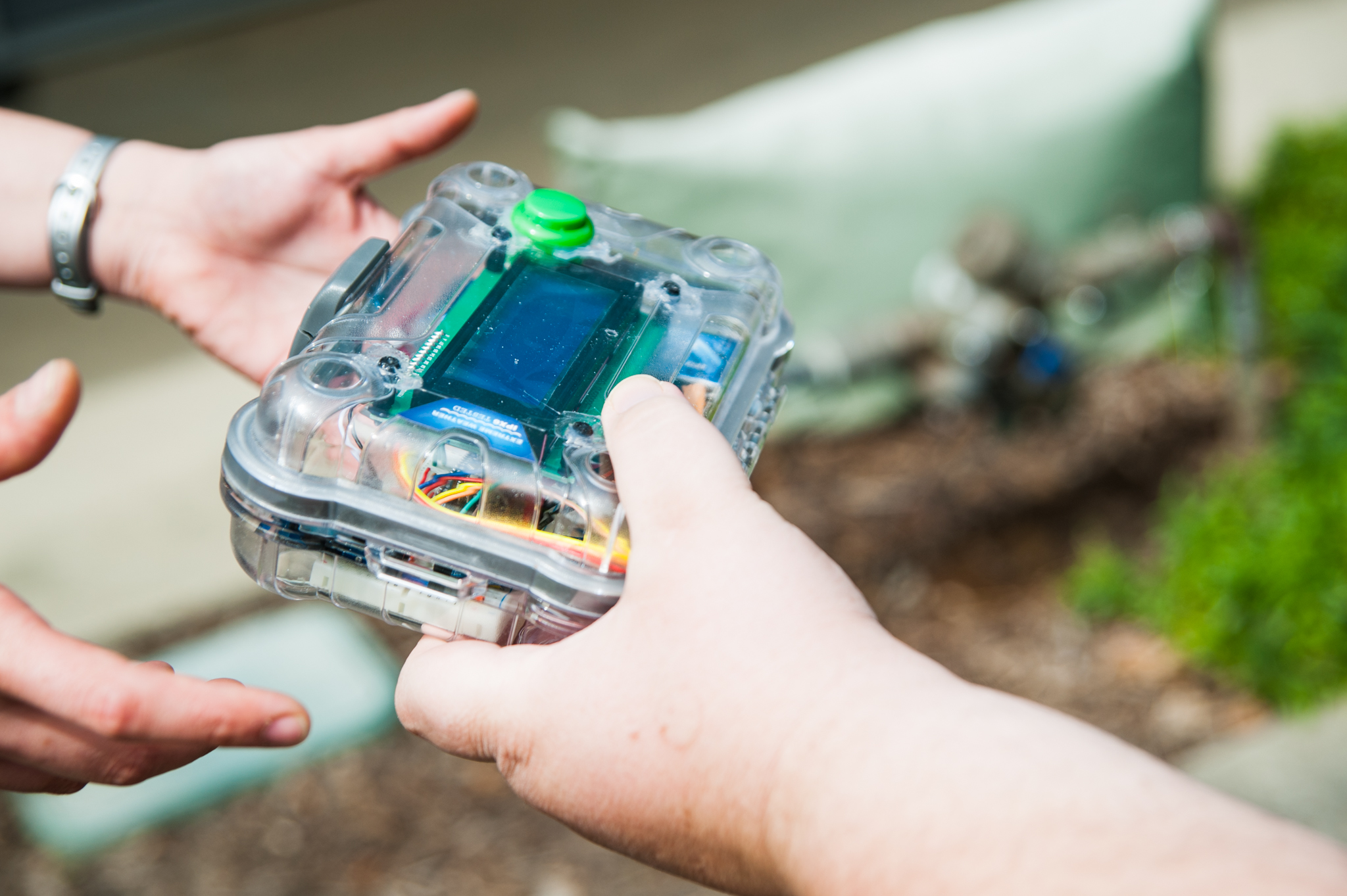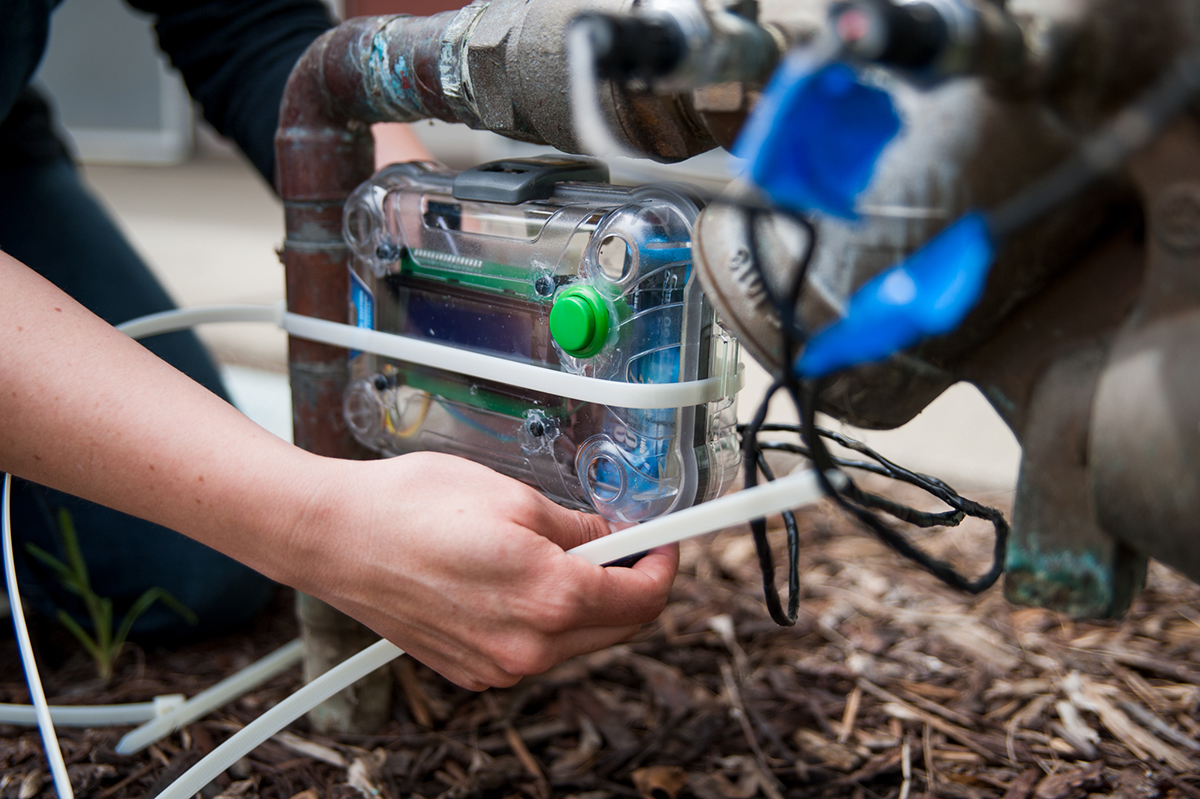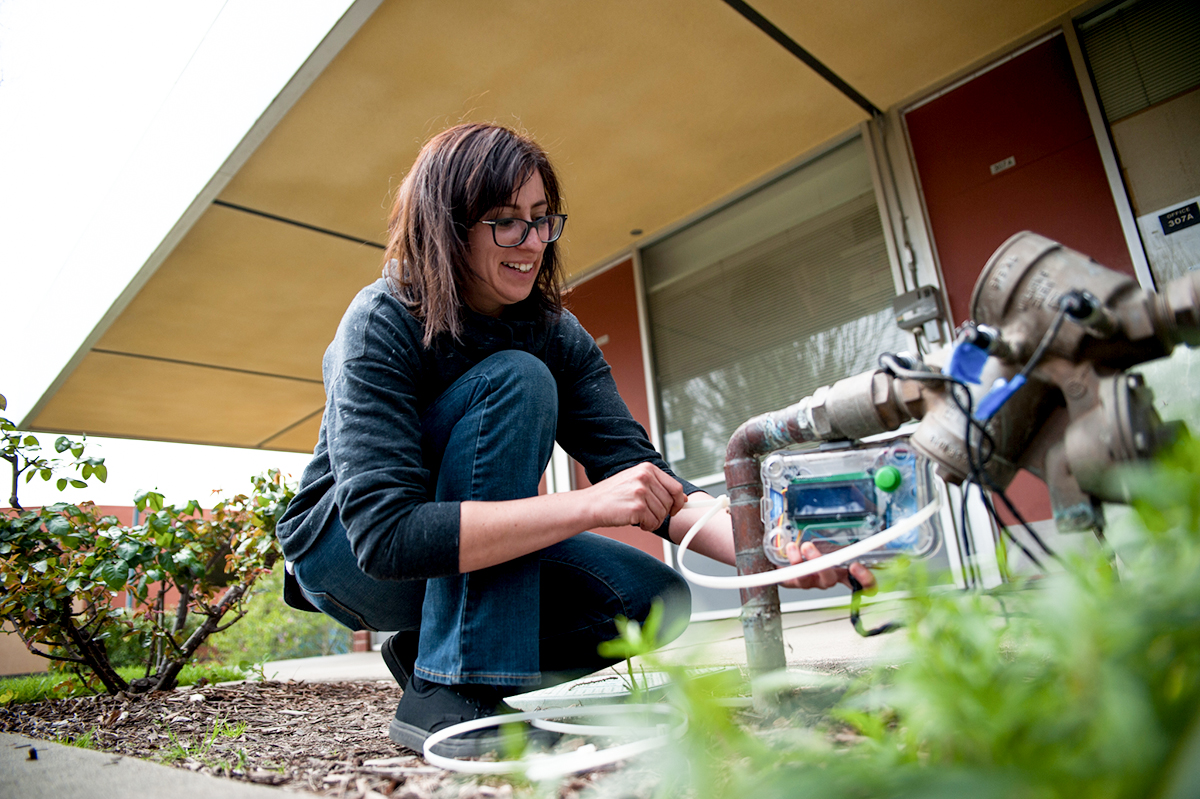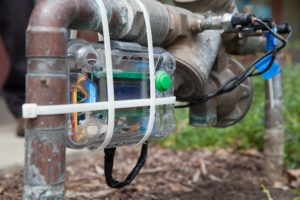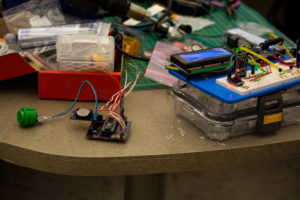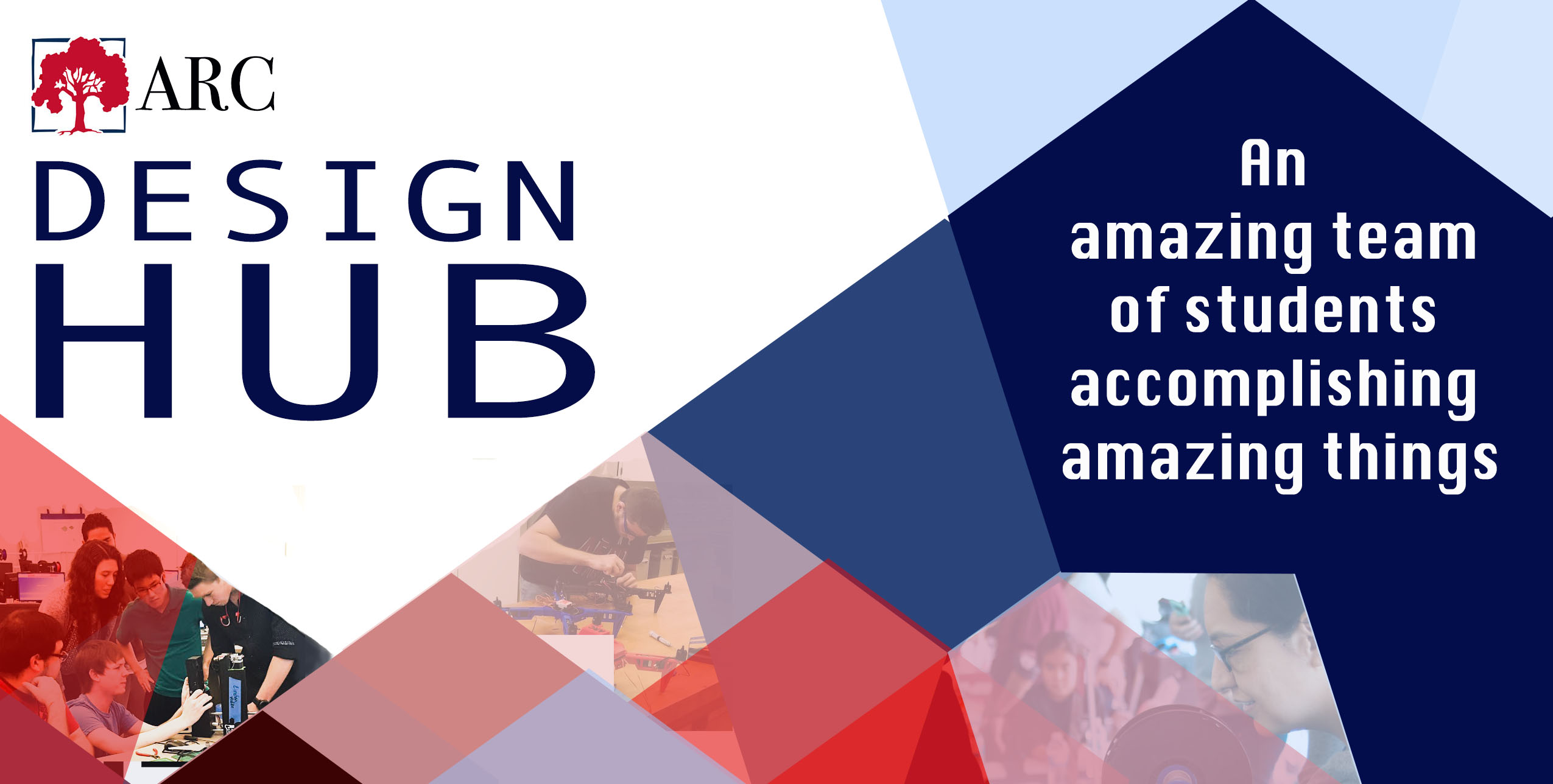A project currently in progress in the Design Hub of American River College is called the “Dieselzilla vs. Drones” Project. We start with interns Kevin and Sean, who are collaborating along with James Mullerleile on this project in the Design Hub. Kevin is the programmer, and Sean is the 3D Designer behind this project. When we first hear the word, “Dieselzilla,” of course we are left wondering “what in the world is this, and what does it do?”
Well, Dieselzilla is the huge metal sculpture in the front of the Student Services and Cafeteria area (the huge glass building behind the American River College Library).
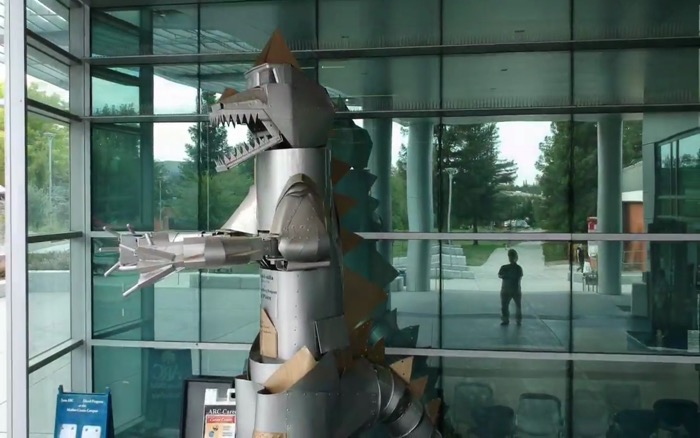
Every day on the way to class, students who walk past it are seen doing double takes. Most can’t take their eyes off of it- as mesmerizing as a well-crafted, fantastically massive Godzilla sculpture can be. Most students on campus pass Dieselzilla every day and have no clue as to how or why it got there. Even our photography intern, Angelique, told us “Ever since I started attending, I wondered what it was and why it was there- and now I had the chance to find out,” before she captured some pictures of the magnificent metal beast.
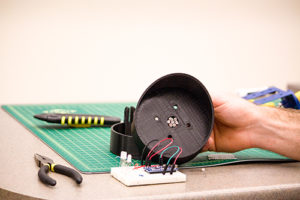
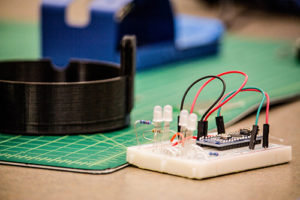 The Design Hub interns discussed the structure of the sculpture. It actually moves around with the use of a hydraulic system within the Dieselzilla! To the right, we can take a look at what goes inside of the massive metal body.
The Design Hub interns discussed the structure of the sculpture. It actually moves around with the use of a hydraulic system within the Dieselzilla! To the right, we can take a look at what goes inside of the massive metal body.
These are the parts that were designed and put together by our interns, and this is what makes the magic happen. With everything in place, Dieselzilla comes to life!
This is a very cool, collaborative project, as well as an impressive and intriguing presence everyday on our campus.
